Home Theater Projectors: Your Questions Answered!
- Tom Curnin

- Jun 2, 2023
- 15 min read
Updated: Oct 24, 2023
Professional AV expert, Tom Curnin, explains what you need to know when looking to buy a home theater projector.

Table of Contents:
Introduction
Why should I choose a projector over a large screen TV?
What are the characteristics of home theater projectors?
Can you explain projection technologies?
What should I consider for placement and room setup?
What can you tell us about anamorphic lenses and 2.35:1 screens?
Budget Considerations?
Additional tips and best practices.
Further resources
Watch our 4 minute video: How to choose the right projector for your home theater.
Introduction: Whether you're a cinephile, sports buff, gamer, or just casual watcher yearning for a larger-than-life viewing experience, our expert guidance here, is to educate you and help you make sure you choose the best projector for your home. Whether you are designing a dedicated home theater, transforming your living room, media room, or even your backyard into captivating space, this is the ultimate guide on the internet to make it the best viewing experience possible. With over 20 years of projector experience in sales, installations and calibrations, we are going to share it all with you and the essential factors to consider. From resolution and brightness to contrast ratio and connectivity options. Along the way, we'll also explore the latest technologies like HD, 4K resolution, HDR, and 3D capabilities. So get ready to transform your home into a cinematic haven where the magic of the big screen comes alive.
Why should I choose a projector over a large screen TV?
TC: You need to see it to truly believe it, but in a nutshell, you’ll unleash the power of home entertainment and unlock the boundless possibilities of immersive entertainment. Let me explain for those who are still on the fence about whether projectors can outshine TVs when it comes to home entertainment.
But before we dive into finding the perfect projector for you, let's address the elephant in the room and let me share why projectors are the ultimate choice. From transporting you to the heart of a cinematic world on a giant screen to offering unbeatable value for your entertainment buck, projectors will bring a new level of excitement into your home. Here is the bottom line…you can get a much bigger screen than a TV. The bigger screen means more fun and both you and friends will shout, “Wow!”
By understanding home theater projectors, you can select a projector that perfectly suits your needs and delivers an exceptional cinematic experience in the comfort of your own home.
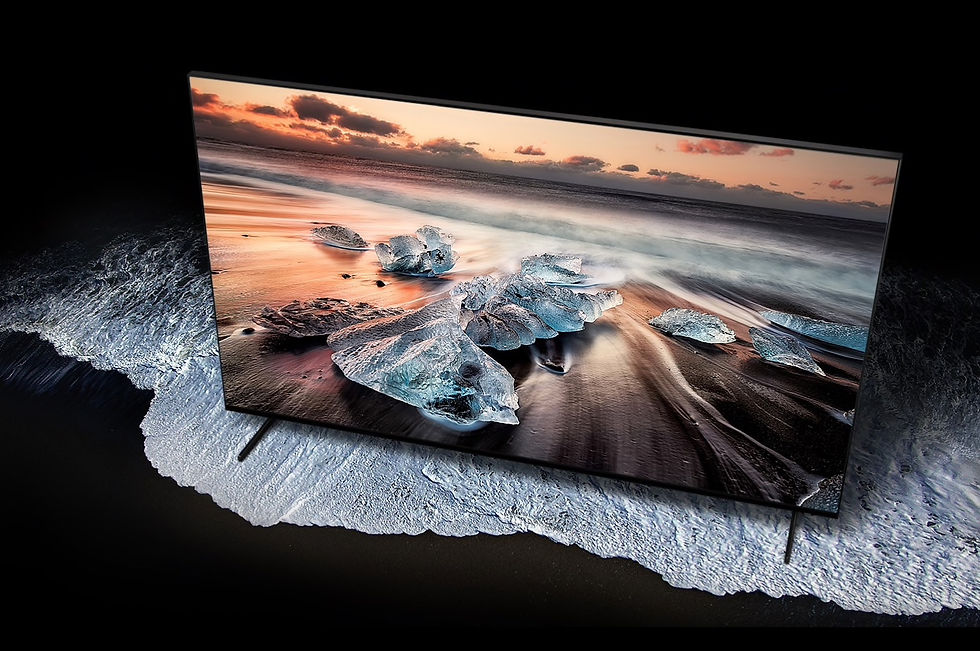
That sounds great, but what about affordability?
TC: We all know that some television makers boast that they have screens over 100 inches. These come with a price tag of well over $100,000, which is clearly out of reach for most of us. On the other hand, projectors provide a budget-friendly alternative that do not skimp on size or quality. Home theater projectors unlock the magic of jaw-dropping screen sizes, well over 100 inches, all at a fraction of the cost. In other words, you can easily enjoy a better entertainment experience without breaking the bank.
Are there custom sizes depending on the size of the room or wall?
TC: Unlike TVs confined by fixed dimensions, projectors unlock the potential to turn any wall or screen into a canvas for cinematic magic. Whether you desire an amazing 160-inch display or a more intimate viewing experience with a 110-inch screen, projectors grant you the freedom to customize your screen size according to your space.
What is the quality of the image considering the large size?
TC: Be prepared to be blown away by the incredible imagery of modern home theater projectors. Gone are the days of blurry and faded colors. Today’s “magic lanterns” offer a visual feast for your eyes with stunning resolution, impressive sharpness, and breathtaking color accuracy. Whether you opt for Full HD or go all-in with 4K Ultra HD, projectors rival and, in some cases, even surpass the image quality of high-definition televisions.
What affect does it have on our eyes?
TC: Unlike TVs that emit their own light, projectors reflect light off a projection screen, creating a softer and more gentle viewing experience. This significantly reduces eye strain and fatigue, allowing you to indulge in hours of watching immersive content.
Is there really a difference between watching on a large screen TV and a home theater projector?
TC: Nothing compares to the feeling of being enveloped in a massive screen that fills your entire field of vision. Projectors create a truly cinematic experience, transporting you into the heart of your favorite movies, shows, or games. Whether you're hosting a movie night or watching the big game, they have the power to transform any space into an immersive wonderland.

What are the characteristics of home theater projectors that we should be aware of?
TC: Now that we've explored their advantages of projectors, it's time to delve deeper into the world of projection technology and learn how to choose the best projector. I can delve into characteristics that include various aspects such as brightness, resolution, connectivity to help you make an informed decision.
When selecting a home theater projector, it's essential to understand key characteristics that will significantly impact your viewing experience. By familiarizing yourself with the following key factors, you can make a more informed decision and choose the perfect projector for your needs. There are several key factors to consider when evaluating home theater projectors such as Resolution; Processor (HDR, contrast, color space etc.); Brightness; Light Engine Type; Lens Construction; Lens Shift; Image Shift; Inputs; Noise; and Price. In my mind, I believe the first three have the greatest impact.
The immersive nature of projectors-
Nothing compares to the feeling of being enveloped in a massive screen that fills your entire field of vision. Projectors create a truly cinematic experience, transporting you into the heart of your favorite movies, shows, or games. Whether you're hosting a movie night or watching the big game, they have the power to transform any space into an immersive wonderland.
Now that we've explored their advantages and considerations of projectors, it's time to delve deeper into the world of projection technology and learn how to choose the best projector for your home theater. In the upcoming sections, we will discuss various aspects such as brightness, resolution, connectivity, and more, to help you make an informed decision.
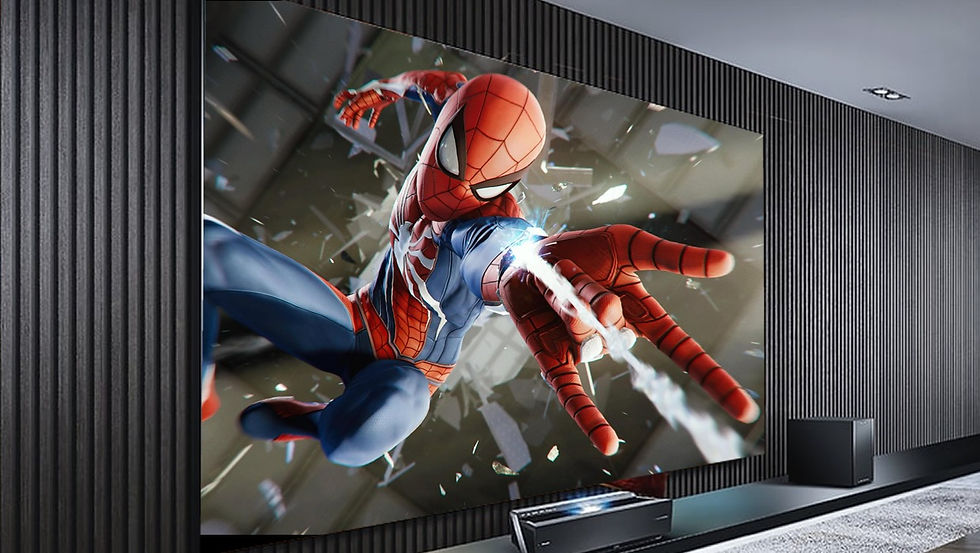
Let’s start with the first characteristic. Can you explain what we should know about resolution?
TC. The resolution of a projector determines the level of detail and clarity of the displayed image. Most projectors today are 4K Ultra HD (2160p). Higher resolutions offer sharper images, especially for larger screens. You shouldn’t consider a projector with less than a 4K resolution. As a side note, all Sony projectors are native 4K.
4K Ultra HD (2160p) are most popular right now with resolutions that provide an affordable level of detail and clarity. With four times the number of pixels as Full HD, 4K projectors deliver stunning image quality, fine details, and lifelike visuals. They are especially recommended for larger screens, as the increased pixel density ensures a more immersive experience.
There are two ways to display a 4K image the best is to use a chipset that has native 4K resolution. The other is to use a 2K chipset and interpolate two mages to achieve a 4K image. Therefor you make see reference to Native resolution and Max resolution.
Native resolution the native (unenhanced resolution) of the imaging chip
Max Resolution the enhanced resolution capable. Typically implemented by quick doubling the image output of a 2K ship to achieve 4K. [3840 horizontal x 2160 vertical pixels]
Ultra HD (8K) projectors are the pinnacle of projector technology, surpassing even 4K projectors in resolution and visual excellence. With their unmatched image clarity, detail, and realism, they offer a breathtaking visual experience that immerses viewers in a world of unparalleled precision. The presence in the market of 8K projectors signifies remarkable progress in display technology. As video processing chips get better and costs decrease over time, these projectors will become more accessible, ushering in a new era of home theater.
How does brightness play a role in image quality? TC: The brightness of a projector is measured in lumens and directly affects image visibility in different lighting conditions. For rooms with ambient light, you should opt for a higher brightness level to maintain image quality. I’ll cover this in detail below for each application.
What is the significance of the contrast ratio? TC: Contrast ratio refers to the difference between the brightest and darkest areas of an image. A higher contrast ratio produces deeper blacks, brighter whites, and enhances the overall image depth and realism. It is crucial for reproducing fine details, shadows, and richer, vibrant colors. Let me point out that when considering contrast ratio, keep in mind that manufacturers may measure and advertise it differently, making direct comparisons challenging. It is advisable to read reviews and consider real-world performance evaluations for a more accurate understanding of a projector's contrast performance.
Obviously vibrant colors are important for an immersive experience. TC: Yes, a higher contrast ratio contributes to vibrant color reproduction by improving color differentiation and saturation. It ensures that colors appear more accurate and lifelike, enhancing the visual impact of movies, games, and other content.

Light Engine Type
Laser or traditional bulb. Most performance projectors are laser based. Typical laser life is 20,000 hours or 5 hours a day for 11 years.
Lens Construction
Glass is better than plastic. You find glass lens on higher end projectors. Typically, better projectors have more optical element to provide a sharper picture. With the exception of the Aspherical front lens element, which is a special optical resin, the rest of the lens elements are glass. For critical elements they employee extra low dispersion glass.
What is the significance of the aspect ratio? TC: When it comes to aspect ratios, there are several options to consider. The 2.35:1 aspect ratio, also known as CinemaScope or widescreen, is popular for movies filmed in the widescreen format, providing an immersive cinematic experience. The 16:9 aspect ratio is the most common and versatile, ideal for HDTV and gaming. By choosing the right aspect ratio for your projector setup, you can ensure optimal viewing experiences and compatibility with various content types.
Projector Characteristics Conclusion
We have looked at all the factors that are important to evaluate when selecting your projector. This as a major decision when designing you home theater. Projector is the number one factor affect the WOW factor of your theater. Of the items discussed above are these are the most important
1. Resolution
2. Processor (HDR, contrast, color space etc.)
3. Brightness
Can you explain projection technologies? TC: Choosing the right projector for your home theater involves understanding the various technologies available. LCD, DLP, and LCoS are three key technologies that come with their own benefits and considerations. Let's explore their differences...
LCD (Liquid Crystal Display) projectors use liquid crystal panels to create images. They offer accurate color reproduction, high brightness levels, and sharp image detail. LCD projectors are known for their excellent color accuracy and are often favored for applications that require vibrant and natural colors. However, they may exhibit a slight screen door effect, where the image appears to have a visible grid pattern, especially at close distances.
DLP (Digital Light Processing) projectors use tiny mirrors to reflect light and create images. They excel at producing high contrast ratios, deep blacks, and smooth motion handling. DLP projectors are well-suited for home theater setups, as they provide excellent cinematic image quality. They offer a more seamless image due to the absence of a screen door effect. However, some people may be sensitive to the rainbow effect, a slight color separation artifact that may be visible to some viewers.
LCoS (Liquid Crystal on Silicon) projectors combine elements of LCD and DLP technologies. They use liquid crystals on a reflective surface to create images. LCoS projectors typically provide exceptional image quality, with high contrast ratios, deep blacks, and minimal screen door effect. They offer accurate color reproduction and smooth motion handling. They are also known for their ability to deliver sharp, detailed images with minimal artifacts. However, they tend to be more expensive compared to LCD and DLP projectors.
When it comes to image quality, LCD projectors excel in color accuracy, DLP projectors excel in contrast and motion handling, and LCoS projectors offer a balanced performance with high image quality. While LCD and DLP projectors are widely available in various price ranges, LCoS projectors are typically found in higher-end models with advanced features. It's best to consider your favorite content when selecting a projector technology. As a side note, Sony uses LCoS.
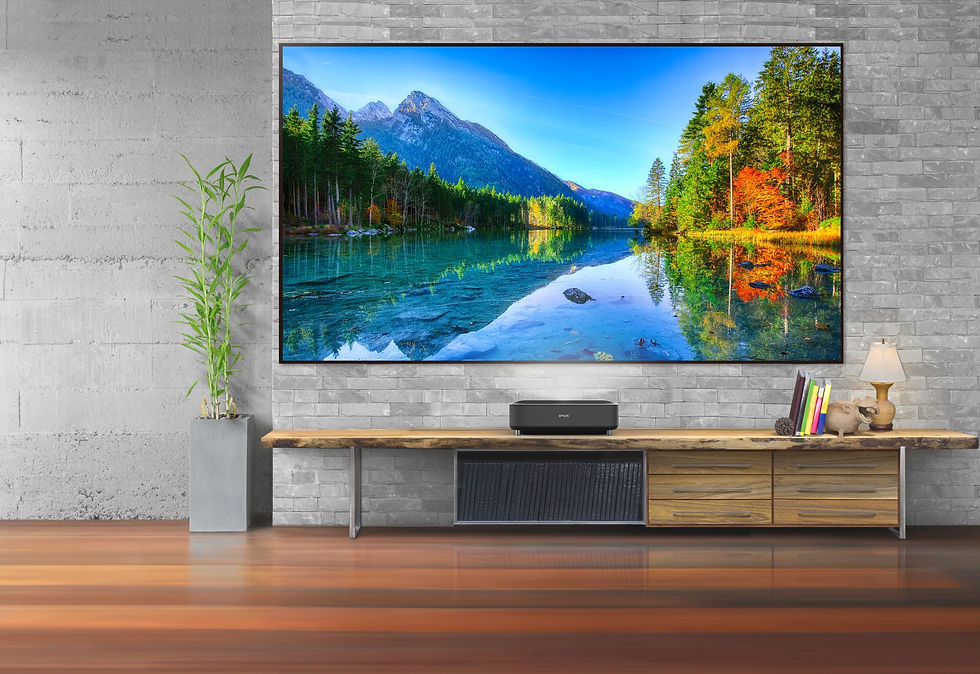
What should I consider for placement and room setup?
TC: Creating an optimal room setup and placement for your home theater projector is extremely important for maximizing your viewing experience. The following considerations ensure that every seat in the room enjoys an immersive and unobstructed view. For room preparation, first and foremost you should start with a dark room. For screen placement, determine the ideal location for your screen, considering factors such as viewing angles, seating arrangement, and room layout. Aim for a central position that provides an unobstructed view for all viewers.
Now mount the projector securely to ensure stability and precise alignment with the screen. Consider ceiling mounts or wall mounts for a clean and efficient setup as well as the height of the projector once installed. Ideally, the projector lens should line up with the top of the screen. Another consideration is ambient light. Take steps to minimize ambient light in the room, as it can affect image quality. Install blackout curtains, shades, or blinds to darken the room effectively. Alternatively, consider using motorized shades that can be controlled conveniently to darken the room during movie sessions.
The size of your room and the desired screen size play a crucial role in projector selection. Consider the throw distance, which is the distance between the projector and the screen, to achieve the desired image size. Ensure the projector has the necessary zoom and lens adjustment capabilities to accommodate your room size and desired screen size. As screen size increases, the benefits of higher resolutions become more apparent. For larger screens, 4K projectors offer greater detail and minimize the potential for visible pixilation.
What can you tell us about anamorphic lenses and 2.35:1 screens? TC: For cinephiles seeking a truly immersive cinematic experience, anamorphic lenses and 2.35:1 aspect ratio screens make a significant difference. Let's look at anamorphic lenses, the advantages of using a 2.35:1 screen, and the considerations for incorporating them into your home theater setup:
Anamorphic lenses are optical attachments designed to expand the horizontal width of the projected image, allowing movies filmed in the CinemaScope format (2.35:1 aspect ratio) to be displayed without black bars at the top and bottom of the screen, just like at the movies! When incorporating anamorphic lenses and 2.35:1 screens into your home theater setup, consider projector compatibility. Ensure that your projector is compatible with anamorphic lenses and has the necessary settings to accommodate the wider aspect ratio. Some projectors have dedicated modes or lens memory settings for anamorphic setups.
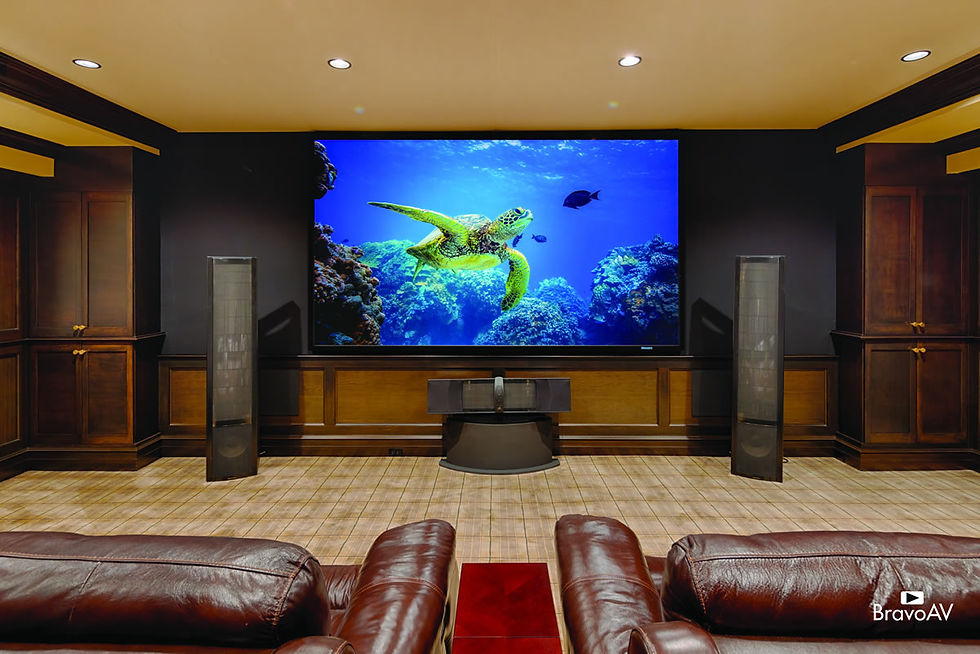
Help me to understand how to balance my budget with the best home theater projector in my price range.
TC: When it comes to projectors, different price ranges often correlate with varying features, performance levels, and brand reputation. Let’s consider the following breakdown and recommendations for different budget categories:
For an entry-level budget ($2,500 to $10,000) look for affordable projectors within this range that strike a balance between price and basic features. These projectors are suitable for casual home theater setups.
For a mid-range budget ($10,000 to $50,000), allocate a higher budget within this range to access projectors with improved image quality, higher brightness levels, and more advanced features. These projectors provide a better viewing experience and enhanced connectivity options.
High-end budget ($50,000 to $150,000), with a larger budget within this range, you can invest in high-end projectors that deliver exceptional image quality, extensive connectivity options, and advanced features like lens shift and motorized zoom. These projectors are designed for enthusiasts seeking top-of-the-line performance. Focus on brands with a strong reputation for producing high-quality projectors.
Sony has projectors ranging from $5,000 to 80,000. Just like most things in life you get what you pay for.

3. Understanding Projection Technologies: LCD, DLP, and LCoS Choosing the right projector for your home theater involves understanding the various technologies available. LCD, DLP, and LCoS are three key technologies that come with their own benefits and considerations. Let's explore their differences...
A. LCD (Liquid Crystal Display): LCD projectors use liquid crystal panels to create images. They offer accurate color reproduction, high brightness levels, and sharp image detail. LCD projectors are known for their excellent color accuracy and are often favored for applications that require vibrant and natural colors. However, they may exhibit a slight screen door effect, where the image appears to have a visible grid pattern, especially at close distances.
B. DLP (Digital Light Processing): DLP projectors use tiny mirrors to reflect light and create images. They excel at producing high contrast ratios, deep blacks, and smooth motion handling. DLP projectors are well-suited for home theater setups, as they provide excellent cinematic image quality. They offer a more seamless image due to the absence of a screen door effect. However, some people may be sensitive to the rainbow effect, a slight color separation artifact that may be visible to some viewers.
C. LCoS (Liquid Crystal on Silicon): LCoS projectors combine elements of LCD and DLP technologies. They use liquid crystals on a reflective surface to create images. LCoS projectors typically provide exceptional image quality, with high contrast ratios, deep blacks, and minimal screen door effect. They offer accurate color reproduction and smooth motion handling. They are also known for their ability to deliver sharp, detailed images with minimal artifacts. However, they tend to be more expensive compared to LCD and DLP projectors.
When it comes to image quality, LCD projectors excel in color accuracy, DLP projectors excel in contrast and motion handling, and LCoS projectors offer a balanced performance with high image quality. While LCD and DLP projectors are widely available in various price ranges, LCoS projectors are typically found in higher-end models with advanced features. It's essential to consider your favorite content when selecting a projector technology.

Do you have any additional tips and best practices that you can share?
TC: To further enhance your home theater experience with a projector setup, you should consider the following additional suggestions.
Speaker System
When it comes to audio setup, it is best to invest in a high-quality audio system to complement your projector. Consider a surround sound setup with speakers strategically positioned around the room for immersive sound. Ensure proper speaker placement and calibration for optimal audio performance. Explore technologies like Dolby Atmos or DTS:X for three-dimensional audio experiences that add depth and realism to movie soundtracks. See our related video.
Seating
For seating arrangements, arrange seating in a way that optimizes viewing angles and provides a comfortable experience for all viewers. Ensure that seats are positioned to minimize distractions and provide an unobstructed view of the screen for everyone in the room. See our related video.
Acoustics
To optimize room acoustics, incorporate acoustic panels or treatments to reduce echoes, reflections, and standing waves. This improves audio clarity and overall sound quality. See our related video.
Immersive technologies
Next, explore immersive technologies and HDR (High Dynamic Range) to enhance your visual experience. Ensure that your projector supports the necessary formats and standards for optimal playback of immersive content.
Calibration
It is also essential that you calibrate your projector to maintain accurate colors, brightness, and contrast. Calibration tools and professional services can help achieve the best possible image quality.
Software
Don’t forget to stay current with firmware updates for your projector. Manufacturers often release firmware updates to improve performance, fix bugs, and introduce new features. Check the manufacturer's website or product support page for firmware updates and follow the recommended installation instructions.

Kaleidescape – simply the best source.
For cinephiles seeking a premium movie-watching experience, adding Kaleidescape, a high-end movie server system. This integration allows you to access a vast library of movies, including high-quality 4K HDR content, offering an unmatched level of convenience and quality.
By implementing these additional tips and best practices, you can maximize the immersive experience of your home theater setup with a projector. From optimizing audio to fine-tuning image quality and staying updated with the latest technologies, these practices ensure a stellar home theater experience for you and your family or friends.
I hope by now I have explained and convinced you that projectors are the game-changers you've been waiting for. If you're ready to take your home entertainment experience to new heights, it's time to join t
he projector revolution. Embrace the affordability, flexibility, and immersive nature of projectors, and say goodbye to the constraints of traditional televisions.
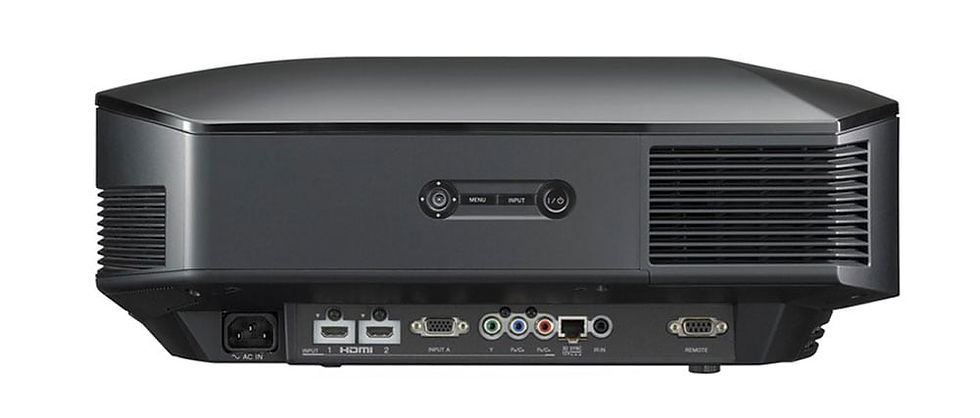
Bravo AV is a Sony Diamond Dealer. Why to you like Sony projectors so much
TC: We have been Sony Diamond dealers for years. Sony make high performance products that are reliable and integrate well with other equipment. Sony’s depth and breadth is unmatched. We have a saying that describes Sony “From Lens to Living Room.” Sony has a movie production company and makes all the professional cameras that shoot the movies. They have all the postproduction tools and know how to deliver an exceptional experience to your home through the projects, TVs and AV receivers.
Cutting-Edge Technology: Sony is known for its commitment to innovation and investing in advanced technology. They consistently integrate the latest advancements into their projectors, ensuring excellent picture quality, color accuracy, and performance.
Superior Image Quality: Sony projectors are renowned for their exceptional image quality. They utilize advanced imaging technologies like 4K resolution, HDR (High Dynamic Range), and SXRD (Silicon X-tal Reflective Display) panels to deliver crisp, detailed, and lifelike images. The combination of these features ensures an immersive visual experience with accurate colors and impressive black levels.
Extensive Product Range: Sony offers a wide range of projectors suitable for various applications and budgets. This versatility allows customers to find a projector that suits their specific requirements.
Industry Reputation and Reliability: Sony has established a strong reputation in the audiovisual industry due to its commitment to quality and reliability. Their projectors are built with durable components and undergo rigorous testing to ensure long-lasting performance.
Are there any further resources for those who may have more questions? TC: For additional resources, you can visit our website’s Knowledge Center. You will find several helpful articles on home theaters. Additionally, please check out our gallery of home theater photos. There you can find a series of 19 photos that chronical a home theater installation from start to finish.
Visit our Showroom!
While this article is very informative, nothing beats seeing it yourself. Please call us to see up and appointment to see our theater.
Tom Curnin, the owner of Bravo AV, is a CEDIA Professional Designer, THX certified professional home theater Level 1 and Home Acoustic Alliance trained to Level II. Bravo AV is a HTA (Home Technology Association) Certified Install Firm. Tom may be reached at 908-953-0555 or Tom@BravoAV.com.
Contact
Bravo AV
80 Morristown Rd.
Bernardsville, NJ 07924
Tel. (908) 953-0555
For additional resources, please visit our Home Theater web page. Tom Curnin, the owner of Bravo AV, is a CEDIA Professional Designer, a certified THX Level 1 home theater professional and a member of the Home Acoustic Alliance trained to Level II. You can contact Tom directly at (908) 953-0555 or through email at Tom@BravoAV.com.


Comments